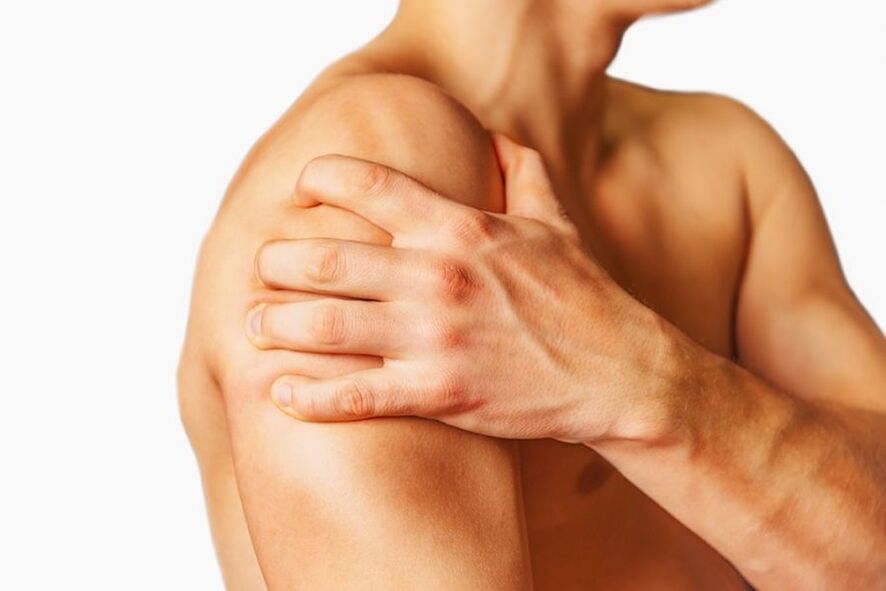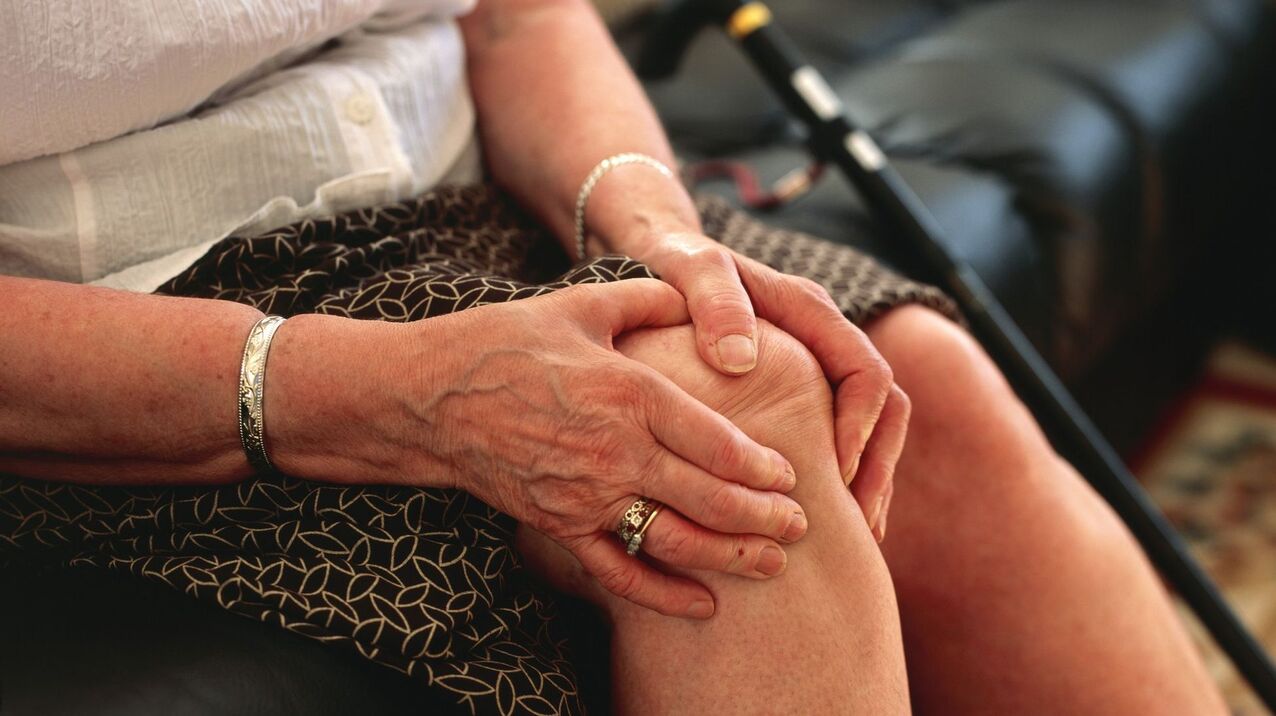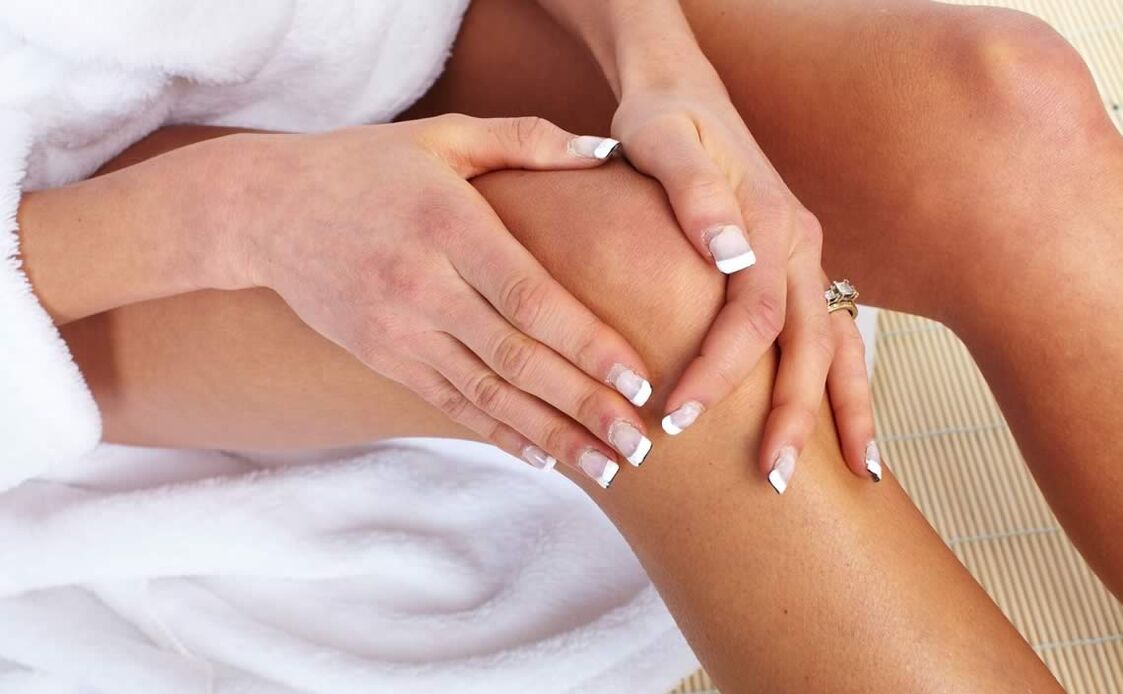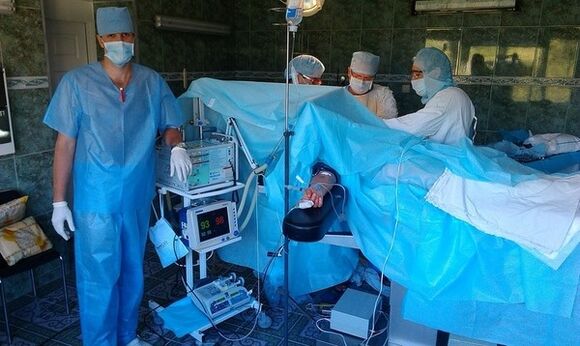
Osteoarthritis can affect any joint, while degenerative-dystrophic changes can be isolated or occur in multiple joints at the same time.
This pathology is not life threatening, but it significantly reduces its quality. Severe pain, limitation of mobility increases over time, causing disability.
In the early stages, conservative treatment is prescribed, which helps to stop the development of the disease.
It is difficult to completely cure osteoarthritis deformans (DEformans), but it is possible to preserve the functionality of the bone connection. In the later stages, only surgical treatment will be helpful.
Development Mechanism
Many people have heard of a disease such as osteoarthritis, but not everyone understands what it is. To do this, you need to understand how the joint works.
The surfaces of the bones that form the joints are covered with a smooth, slippery and elastic cartilage that cushions them and protects them from damage. With osteoarthritis, the blood supply to this area is disturbed, and the hyaline cartilage begins to deteriorate. In addition, degenerative-dystrophic changes occur with the capsule, ligaments, periarticular muscles and other segments of the joint.
Usually the disease develops slowly, but the pathological process can accelerate under the influence of external factors. It all depends on the characteristics of the patient's body, comorbidities, lifestyle.
Osteoarthritis develops as follows:
- Blood circulation is impaired in a certain area of the cartilage wall of the joint, then it begins to suffer from a lack of nutrients. Under the influence of traumatic factors, the area of destruction increases.
- The body replaces defects in the cartilage lining of the joints with mineralized tissue, which does not have a clear structure.
- Gradually, pathological growths (osteophytes) appear on the hyaline coating.
- Against the background of the pathological process, healthy areas of the cartilage are exposed to excessive stress. As a result, the work of the joint is disturbed, and its surfaces are gradually destroyed.
Carefully!Osteoarthritis provokes the destruction of the bone surfaces of the joint, inflammation of the synovial membrane, compaction of the joint capsule. There is a narrowing of the joint space, the joint is deformed, destroyed, and then the patient may become disabled. Therefore, it is very important to diagnose and start treating the pathology in time.
Typically, osteoarthritis is detected in patients over 60 years of age. However, the disease is also diagnosed at a young age - from 20 to 45 years old.
Reference. Arthritis and osteoarthritis are similar, so many patients are interested in how the first disease differs from the second. With AOD, only the joints are damaged, and arthritis is characterized by inflammatory damage not only of the bone junction, but also of internal organs (liver, kidneys, heart). This is the main difference between these pathologies.
Classification
People who are far from medicine, when they hear names like knee osteoarthritis, hip osteoarthritis, osteoarthritis, do not understand the difference. The fact is that there are many types of this pathology, which differ in localization, specificity of the course, reasons, origin. Therefore, doctors have created several classifications of osteoarthritis to facilitate their differentiation.

Types of osteoarthritis by location:
- Gonarthrosis is a pathological process of the knees.
- Coxarthrosis is an injury to the hip joint.
- Uncovertebral - deformity of the cervical spine.
- Dystrophic changes in the shoulder joint.
- Interphalangeal - deformation of the interphalangeal joints of the bones.
- Spondylarthrosis is a degenerative change in the joints of the spine.
- Ankle - Wear and tear on the ankle joint.
- Polyarthrosis is a multiple lesion of the joints of the fingers.
In addition, there is also osteoarthritis of the jaw, temporal, cost-vertebral, clavicular-acromial.
Depending on the characteristics of the course, the following types of pathologies are distinguished:
- Osteoarthritis deformans is a disease that has passed to stage 3. It is a progressive disease that requires immediate surgery.
- Osteoarthritis-arthritis - destruction of the cartilage mucosa, inflammation.
- An acute disease in which the characteristic symptoms become more pronounced.
- Chronic osteoarthritis is a slow destruction, a thinning of the cartilaginous mucosa with an erased course.
Depending on the reason, we can distinguish:
- Dystrophic osteoarthritis - occurs as a result of metabolic disorders.
- Fracture osteoarthritis - develops as a result of a fracture.
- Post-traumatic - the disease appeared after a joint injury.
DOA varieties by origin:
- Primary (idiopathic) - occurs for no apparent reason, often due to age-related changes in bone joints.
- Secondary - degenerative-dystrophic disorders provoke many factors (metabolic disorders, hormonal imbalance, trauma).
Doctors distinguish between monoarthrosis and polyarthrosis. In the first case, 1 joint is affected, and in the second, all the joints are destroyed at the same time. The last type of disease is called generalized osteoarthritis, in which 3 or more bone joints are deformed.
Pathology diplomas
Depending on the symptoms and the course, there are 4 stages of AOD:
- 1 degree.The shape and structure of the joint have not yet changed, so the disease has a latent course. Occasionally, the patient feels slight discomfort in the affected area, especially after excessive physical exertion or sudden movements. The composition of the joint fluid changes, the blood supply to the joint is disturbed. The muscle fibers that surround the joint are weakened.
- 2nd degree.Bone joints begin to collapse, bone growths form on their surface. Moderate painful sensations appear, inflammation occurs periodically. During movement, a characteristic crunch is heard in the affected joint. The functionality of the muscles decreases due to the disturbance of the trophism of the nervous tissue.
- 3 degree.There are pronounced degenerative disorders of the hyaline cartilage and joint, due to this, the axis of the limb is bent. Ligaments and muscles are shortened and the joint becomes pathologically mobile, but movement is severely limited. The patient often has incomplete dislocations.
- 4 degree.The bone connection is completely destroyed, complete immobility is observed, as well as a severe pain syndrome even at rest.

Important. At the last stage of osteoarthritis, only endoprostheses will be useful (replacement of the affected joint with a prosthesis).
Causes of AOD
The question of why the disease occurs is quite relevant. Doctors distinguish between internal (certain diseases, bad habits, poor diet) and external (injuries, characteristics of professional activity) causes of osteoarthritis.
Often, secondary degenerative-dystrophic disorders develop against the background of the inflammatory process:
- Infectious diseases that cause various viruses and bacteria.
- Rheumatism.
- Autoimmune diseases.
- Purulent inflammation of the joint.
- Gout (deposit of uric acid salts on the surface of the bones).
- Joint psoriasis.
AOD can occur due to abnormalities in the structure of cartilage and malnutrition. Pathological changes are caused by the following factors:
- Genetic disorders.
- Pathologies that appear during intrauterine development.
- Body changes related to age.
- Osteoporosis (increased brittleness of bones due to calcium deficiency).
- Hormonal imbalance.
- Disorders of metabolic processes.
- Lack of vitamins, minerals.
- Pathologies which are accompanied by muscle weakness.
- Prolonged intoxication.
The exacerbation of diseases of the musculoskeletal system also provokes degenerative changes in cartilage tissue.
External factors for the development of osteoarthritis include:
- Regular hypothermia.
- Dislocations.
- Impact of great force in the joint area.
- Fracture.
- Damage to the meniscus.
- Excessive physical activity associated with professional sports or professional activities.
- Obesity.
- Surgery of the joints or periarticular structures.
Regardless of the causes of AOD, it is important to first identify the cause of the pathological changes, and then treat the consequences.
Reference.Idiopathic osteoarthritis occurs on its own for no apparent reason.
Symptoms
Osteoarthritis is manifested by the following symptoms:
- pain syndrome;
- limitation of mobility;
- cracking sound when moving;
- edema, change in the axis of the connection.
These are characteristic symptoms that occur in all patients.

The first signs of pathology are discomfort in the affected area, which occurs after physical exertion. After the onset of discomfort, you should consult a doctor, since the disease can be cured at an early stage.
Later, the patient complains of mild to moderate pain that appears after loading the damaged joint and quickly disappears.
A decrease in the mobility of the bone junction indicates degenerative changes in its structure. At first, the patient feels stiffness, especially in the morning. Later, it becomes more and more difficult for the patient to perform active movements. With further development, restriction of movement occurs even with additional help. If left untreated, contracture of the joint occurs, and over time its motor activity is blocked.
Many patients complain of a cracking of the joints during movement, which is accompanied by painful sensations and reduced mobility. As the disease progresses, this manifestation becomes more pronounced.
In later stages, the axis of the limb is bent and the joint membrane is deformed. This indicates that the bone connection has practically collapsed and the healthy tissue has been replaced by osteophytes. At this stage, the adjacent joints are subjected to strong stress, then the risk of damage to their cartilage wall increases.
Make a diagnosis
If you notice any signs of osteoarthritis, see a doctor immediately. The diagnosis of DOA is made after taking the history, conducting laboratory and instrumental studies.
First, a visual examination is performed, during which the doctor may notice swelling in the affected area. In addition, palpation is performed, which allows you to determine pain, nodules, changes in temperature and moisture in the skin.
A complete diagnosis involves laboratory research. Blood tests can reveal an inflammatory process, which is indicated by an increase in ESR (erythrocyte sedimentation rate), an increase in the concentration of uric acid. A urine test is done to determine the level of protein.
Osteoarthritis is diagnosed with the help of the following instrumental studies:
- X-rays help to see the change in the shape of the joint.
- Arthrography using a contrast agent is a more accurate diagnostic method than x-rays.
- CT is used to assess the structure of the joint.
- The diagnosis of radionuclides is carried out using radiopharmaceuticals. This study makes it possible to assess the anatomical and functional state of the connection.
Magnetic resonance imaging is a modern, highly informative diagnostic method. During the examination, you can see the deformity of the damaged joint, the rupture of the menisci or ligaments.
To examine the synovial fluid, doctors order a puncture of the affected limb.
After diagnostic measures, the doctor draws up a treatment regimen.
Healing methods
With osteoarthritis of any stage, medical attention is needed. Complex therapy in the early stages helps to stop pathological changes and restore the functionality of the joint. If the patient seeks a doctor with advanced DOA, the prognosis is grim.

With osteoarthritis of the 1st degree, drug treatment is carried out. Chondroprotectors are used to restore the structure of the cartilage lining. The patient is prescribed medication in the form of tablets and capsules. They should be taken in courses of 3 to 4 months twice a year. The drug contains the structural elements of the cartilaginous mucosa.
Nonsteroidal anti-inflammatory drugs (pills, injections) help relieve pain.
DOA treatment is carried out using physiotherapeutic methods:
- Magnetic therapy.
- Ultra-high frequency therapy.
- Electrophoresis.
- Shock wave therapy.
- Paraffin therapy.
- Mud treatment.
Physiotherapy and physiotherapy exercises are performed after the pain subsides. The doctor establishes a series of exercises that the patient must perform systematically. Exercise therapy increases muscle tone, strengthens ligaments, normalizes blood circulation, and helps restore the joint.
During and after treatment, it is recommended to rest, reduce the load on the diseased joint with the help of bandages, crutches and canes.
Sometimes the patient is prescribed a massage. After a series of procedures, the blood supply to the affected area improves and the pain decreases.
During the treatment, the patient must eat properly. You should give up sugar, flour, fatty and spicy foods, potatoes, tomatoes, eggplants. And it is recommended to permanently get rid of bad habits (alcohol, tobacco).
For osteoarthritis, intra-articular injections are used:
- Glucocorticoids help normalize the blood supply to the affected area, stop the inflammatory process, and increase the elasticity of bone tissue.
- Analogues of synovial fluid with chondroprotective properties. These drugs reduce pain, improve joint mobility, and speed up the production of collagen and elastane.

In the later stages of DOA, surgical methods of treatment are used:
- Endoprostheses.
- Arthrodesis.
- Arthroscopy.
In advanced cases, doctors replace the destroyed compound with a metal prosthesis. Most often, this method is used to treat large joints. After surgery, the patient's quality of life improves.
If arthrodesis cannot be performed, arthrodesis is prescribed to the patient. During the operation, the bone surfaces are immobilized with a special plate. Arthrodesis helps relieve severe pain, but does not restore motor activity in the joint.
During arthroscopy, a miniature camera and manipulators are introduced into the joint cavity, with the help of which bone growths are removed and the cartilage structure is restored. The video camera makes it possible to monitor all the manipulations on the screen. As a rule, the operation is performed for gonoarthrosis, but its effect is short-lived.
DOA is dangerous, so it is important to identify and deal with it in time.
Comments
According to patients who have encountered osteoarthritis, it is easier to cure the disease at an early stage. In advanced cases, only surgery will be helpful. But in both cases, the treatment must be comprehensive.
- The first assessment: "I was diagnosed with 2nd degree osteoarthritis of the knee 1 year ago. I took special medications, followed physiotherapy, followed a diet. At first the pain disappeared, mobility was restored, but after 3-4 months the symptoms returned again. Sometimes the pain was accompanied by a rise in temperature. The doctor advised me to take capsules with hondoprotectants. With them my condition improved, for six months now I have not felt any pain. "
- Second opinion: "A few years ago I was diagnosed with grade 3 coxoarthrosis. I was in pain all the time, even at night, I couldn't move my leg normally. The doctor advised me to have the operation, but at first I refused and decided to try the intra-articular injections. However, after the procedures, my condition did not change much. As a result, I opted for a radical method. After endoprosthesis, she recovered for 1 year and 3 months. During this period, she took medicine, performed special exercises, went to massage, physiotherapy, went on a diet. Now I am living a fulfilling life. I advise everyone not to hesitate with the treatment. "
- Third review: "I was diagnosed with a ruptured medial meniscus in the knee and grade 1 gonoarthrosis after MRI. Doctors prescribed chondroprotectors. I also used the ointment twice a day. To protect the knee, I used an orthosis, I only removed it at home during rest. After the course of the injections began, electrophoresis, paraffin therapy, also purchased a magnetotherapy device, had already carried out 10 sessions. After another diagnosis, doctors said the joint had recovered to 70%. I am continuing the treatment and hope to fully recover my leg. "
As you can see, there are different types of osteoarthritis. To avoid surgery and restore joint function, you should see a doctor at the first suspicious signs. Only a doctor will be able to determine the type, degree of complexity of the disease and develop a competent treatment regimen. DOA is easier to deal with from the start.















































